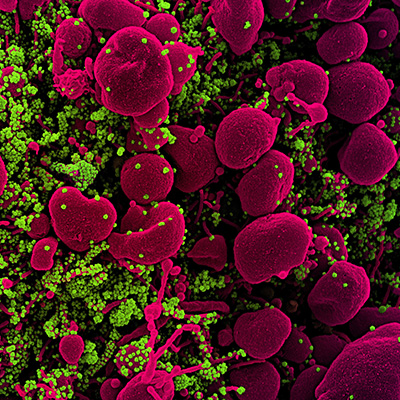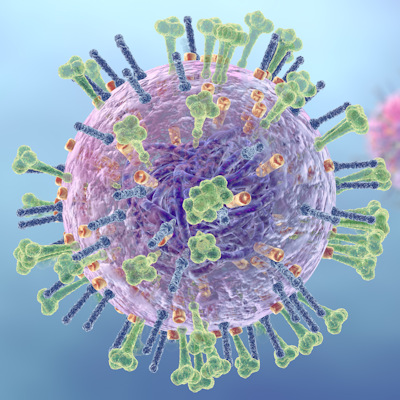December 18, 2020 -- Scientists have identified a key human gene that is required for cells to consume and destroy viruses. The results of the study were published in Nature on December 16 and could point to new treatments to target viral infections, including COVID-19.
Autophagy is a cellular process whereby cells rid themselves of unwanted material by isolating it in double-layered vesicles, called autophagosomes. Autophagosomes fuse with lysosomes to chemically degrade the material and recycle it into building blocks for other uses.
To investigate virus-induced autophagy, researchers from the University of Texas Southwestern Medical Center performed high-content image-based genome-wide short interfering RNA (siRNA) screens of cells infected with Sindbis virus (SIN), a single-stranded RNA virus, and a genetically engineered strain of herpes simplex virus type 1 (HSV-1), a double-stranded DNA virus. Sindbis virus causes a mosquito-borne illness most common in parts of Africa, Egypt, the Middle East, the Philippines, and Australia, and HSV-1 causes cold sores and sexually transmitted infections.
From the screens, the researchers identified more than 18,000 unique human genes that play a role in autophagy. Further analysis found that 216 genes were associated with virus-induced autophagy. To narrow down the search, the team used bioinformatics to associate the genes with biological processes and molecular functions. Given the importance of endosomal entry in virus-induced autophagy, the researchers focused on endosomal protein sorting nexin 5 (SNX5).
SNX5 encodes a predicted phox (PX) domain, a conserved protein domain that binds phosphatidylinositol 3-phosphate, or PtdIns(3)P, a phospholipid found in many cell membranes. During the early stages of autophagosomal formation, PtdIns(3)P recruits materials to the membrane to begin membrane remodeling. Because of these important functions, the researchers hypothesized that SNX5 may play an important role in viral autophagy.
To explore this possibility, they performed knockdown studies of SNX5 and related gene SNX32 in human cells. They found that eliminating these genes resulted in a significant reduction in autophagy induction in SIN and HSV-1, but also six additional pathogenic human viruses (Zika, West Nile, chikungunya, poliovirus, Coxsackievirus B3, and influenza A). These results indicate that SNX5 is required for autophagy induced by a broad range of viral pathogens.
With additional experiments, the researchers showed that SNX5 is specific to virus-induced autophagy and not required for general autophagy. They also determined that it plays a role in the early stages of autophagy but not the late-stage endocytic functions. Specifically, the researchers teased out that SNX5 interacts with phosphatidylinositol 3-kinase complex 1 (PI3KC3-C1) to initiate the formation of autophagosomes.
The researchers studied viral infection in SNX5-deficient cells and knockout mice, which led to increased susceptibility to infection by viral pathogens. SNX5 likely restricts viral replication in cells via an autophagy-dependent mechanism and therefore SNX5 provides protection against viral infection. The elimination of SNX5, in turn, may leave cells vulnerable to infection.
These results indicate that cells do have a unique pathway for viral autophagy that likely has SNX5 at the helm, according to the authors. Unraveling details of this biological process could lead to new ways of fighting viral infections. Most current methods target viruses through their individual weaknesses -- an approach that necessitates developing a unique strategy for each virus.
"By learning how cells naturally take up and degrade viruses, we could discover ways to augment this process, creating a more general strategy for developing broad-spectrum antiviral therapeutics that combat an array of different viral infections," said lead author Xiaonan Dong, PhD, an assistant professor of internal medicine at the University of Texas Southwestern, in a statement.
Do you have a unique perspective on virology or infectious disease research? Contact the editor today to learn more.
Copyright © 2020 scienceboard.net








